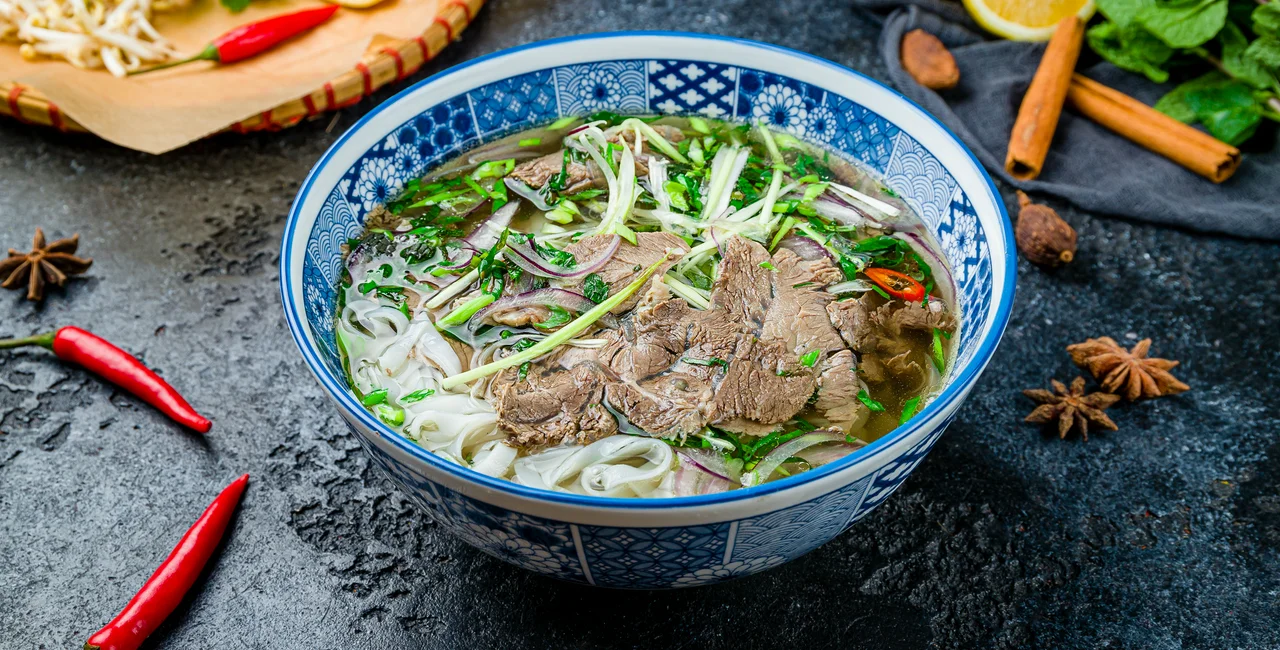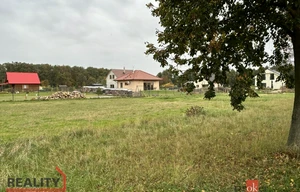Sunday, December 12, marked the “Day of Phở,” the wildly popular Vietnamese noodle soup. The Czech Republic was one of 17 countries in the world opening Google's homepage to a noodle-themed Doodle this weekend.
The day was first celebrated in Vietnam in 2018. “Phở, Vietnam’s national dish [is] an aromatic soup brimming with savory broth, soft rice noodles, fresh herbs, and thinly sliced meat,” Google wrote on its dedicated Doodles site adding that the soup is “a treasured element of Vietnamese heritage,” and “phở-nomenal!”
In Vietnam, phở is eaten for breakfast but internationally is more popular for lunch or dinner. News sever CNN ranked it among the world’s 20 best soups, along with borsht, gazpacho, and gumbo. Lonely Planet has recommended it as one of the best hangover cures while traveling, and Rough Guides praised it for being easy on the budget.
Phở emerged from the northern part of Vietnam, near Hanoi, between the late 19th and early 20th centuries. The dish slowly began to filter to the southern part of the country and take on regional variations.
Beef was popular among the wealthy during the French occupation of Indochina. Around the same time, the French imported the concept of making soup stock from bones. While beef was expensive, beef bones were cheap and easily used to make a new, affordable hot dish for laborers. Vegetables, spices, and small amounts of meat were added and a new culinary trend was born.
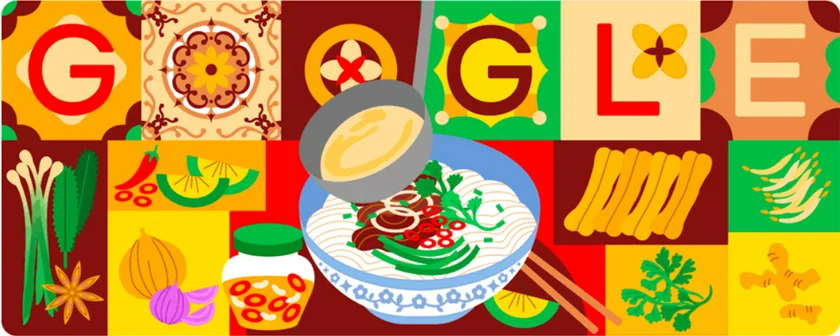
Interest in Vietnamese cuisine in the Czech Republic began to take off in the 2000s when a number of Vietnamese restaurant owners began serving their own cuisine as opposed to Chinese or Thai food.
As soup has always been a mainstay of the Czech diet (fish soup is a traditional part of Christmas dinner) phở was a natural fit for the local culinary scene.
In Prague in particular, where most districts have at least one Vietnamese bistro, it's a cheap and tasty lunch option and the most ordered of all Vietnamese dishes available on local menus, according to a recent poll of Vietnamese restaurateurs.
Phở served in the Czech Republic is typically the North Vietnamese variety, heavy on fresh herbs such as basil and coriander. The southern phở bowl features garlic, turmeriс, сurry, and coconut milk.
Thanh George Nguyen owner of Hanoi Square, which opened in Prague in 2020 told Czech news server Novinky that there is no right or wrong way, however, to serve the dish.
“It tastes different in the north than in the south, but there is no right or wrong. Many places in the Czech Republic claim to have an authentic phở. But there is no authentic phở," he said.
What makes phở distinct is a cooking process that achieves multi-layered flavors and a clear, aromatic broth from simmering ingredients like roasted ginger, fennel seed, star anise, and cinnamon.
The establishment of the Vietnamese community in the Czech lands goes back to the 1950s when communist Czechslovakia began offering educational and training stays to citizens of North Vietnam. After 1989, many of them decided to remain permanently, and immigration numbers have steadily increased ever since.
Today there is a sizable Vietnamese population in the Czech Republic – somewhere between 60,000 and 100,000 strong, making it the third-largest group of foreigners following Slovaks and Ukrainians. The largest Vietnamese community resides in Prague, but there are also notable enclaves in Karlovy Vary and Cheb.
The Czech capital's Vietnamese population is largely concentrated in the southern part of the city. Prague 4, which encompasses the Libuš and Kunratice districts, collectively known as Little Hanoi, is home to the Sapa market, a complex of restaurants, food stands, specialty grocery shops, and a Buddhist temple.
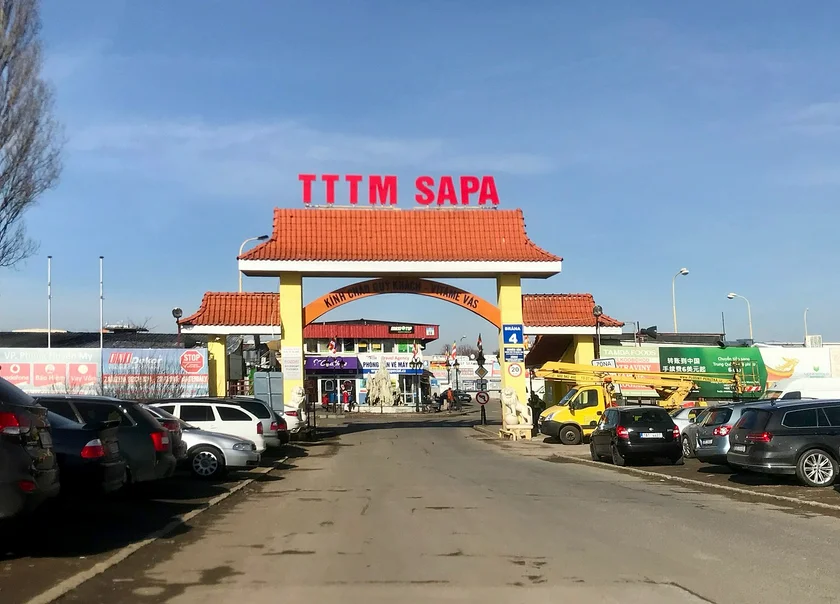
It's also the best place to go for a steaming bowl of phở (Anthony Bourdain famously tucked into a bowl at Sapa during a 2010 episode of "No Reservations" devoted to Prague).
Original beef phở bò can be prepared with raw, roasted, or boiled beef. There is also a chicken variety called phở gà, and, a bit less common on Prague menus, phở hải sản, the seafood version. Of course, these days, vegan and vegetarian versions abound, though a tofu version called phở cải lương created in Vietnam in the 1920s, never really caught on.
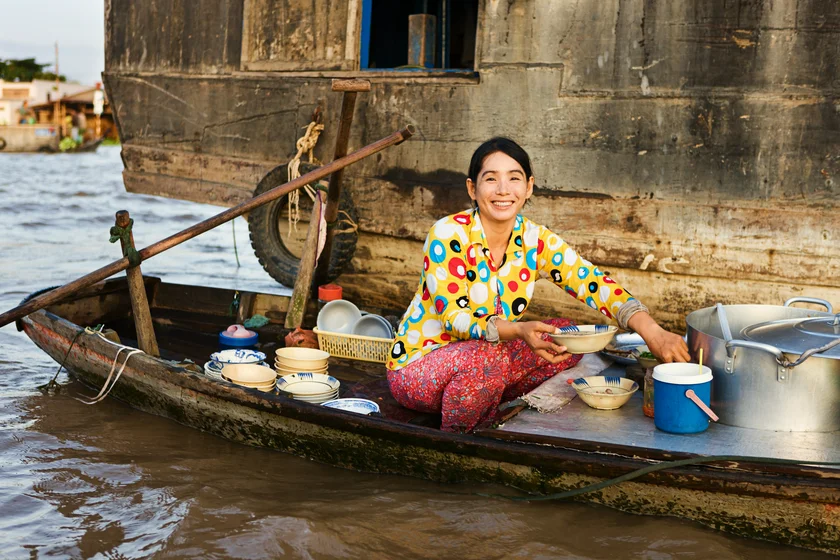
Phở trộn isn't soup but a salad of sorts comprised of ingredients that would go into the soup but served without the broth. Similarly, phở cuốn is a wrap of meat and vegetables.
Nguyen's Hanoi Square is part of a new wave of next-gen Vietnamese restaurants trying to introduce Czechs to a world beyond phở.
Other notable newcomers include the Czech-Vietnamese brothers Khanh and Giang Ta who are behind a string of Vietnamese fusion restaurants (Gao Den, Taro, and the latest Dian) that have achieved local success and garnered international recognition.
All, of course, still serve up a mean bowl of phở.
While Czech-Vietnamese cuisine evolves, old favorites in Prague remain. Ha Minh and his sister, Ha Linh, the duo behind one of Prague's first Vietnamese restaurants, Madame Lyn's, shared this tried and true recipe with us several years back.
Madame Lyn's Phở
- Salt
- Vermicelli noodles
- Beef (large enough portion for approximately four thin slices per bowl of soup)
- Bean sprouts
- Onion
- Coriander
- Scallions
- Chili peppers
- Broth*
- Fish sauce*
*Note: Portion sizes for ingredients depend on how many people you are serving.
- 1.Precook beef by slow boiling in a pressure cooker with water and a little salt until tender and cooked with a little pink in the middle and slice into thin strips and set to the side.
- 2.Boil vermicelli as the label directs, strain, and set to the side.
- 3.Chop the onions, chili peppers, and scallions and keep separate in individual bowls.
- 4.Put a serving of vermicelli in the bottom of each bowl.
- 5.Layer on four or five slices of beef, then the bean sprouts, a good pinch of onion, and scallions, and a few peppers.
- 6.Add a 50/50 mixture of broth and water and stir in fish sauce to suit your personal taste.
There's no better time to cozy up to a bowl of phở and celebrate its interesting place in Czech culinary history.












 Reading time: 5 minutes
Reading time: 5 minutes 